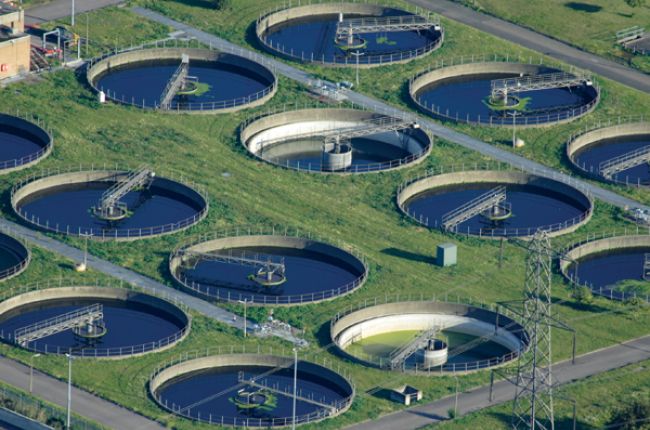Secret Difficulties in Urban Waste Water Treatment Techniques
Secret Difficulties in Urban Waste Water Treatment Techniques
Blog Article
Strategic Approaches to Improve Drainage Treatment Effectiveness and Decrease Environmental Effect
In the realm of waste water therapy, the mission for improved efficiency and minimized ecological effect is a perpetual obstacle that demands strategic remedies. The combination of advanced therapy technologies, energy-efficient procedures, resource recuperation methods, enhanced nutrient elimination methods, and smart surveillance and control systems stands for a multifaceted structure for attending to these pressing problems.
Advanced Therapy Technologies
Innovative membrane layer filtering systems have actually transformed innovative wastewater treatment procedures, substantially enhancing the removal of contaminants. These ingenious systems operate forcibly water via a semi-permeable membrane, successfully dividing pollutants from the water stream. The membrane layer's tiny pores trap contaminants such as germs, infections, and suspended solids, permitting just detoxified water to pass through. This innovation has actually confirmed to be highly effective in eliminating a variety of pollutants, consisting of drugs, hefty steels, and natural compounds, which are typically testing to remove via traditional treatment techniques.
Moreover, membrane filtration systems provide many benefits over standard therapy strategies. They call for much less area, create higher-quality effluent, and are much more immune to changes in influent water high quality. Furthermore, these systems are extremely versatile and can be easily incorporated into existing treatment plants or used as standalone units for decentralized applications. As the need for tidy water continues to rise, the adoption of sophisticated membrane purification innovations is crucial to make sure sustainable and effective wastewater therapy methods.
Energy-Efficient Processes
The combination of energy-efficient processes in wastewater treatment systems is crucial for maximizing resource use and reducing functional costs. By carrying out energy-efficient technologies, therapy plants can considerably lower their carbon footprint and general ecological impact. One crucial approach to improving power efficiency in wastewater therapy is the application of sophisticated oygenation systems, such as fine bubble diffusers or surface area aerators, which can boost oxygen transfer effectiveness and lower energy intake. Additionally, including energy recuperation systems, like anaerobic digestion for biogas manufacturing or using excess heat for thermal procedures, can help balance out power needs and advertise sustainability.
Additionally, optimizing procedure control and automation via making use of innovative sensing units and checking systems can boost total power effectiveness by changing operations in real-time based on real need and problems. Carrying out power audits and regularly monitoring power efficiency indications are essential practices to recognize locations for enhancement and track energy-saving efforts efficiently. In general, the adoption of energy-efficient procedures in wastewater treatment not only benefits the environment yet likewise contributes to long-term price financial savings and functional sustainability.
Resource Recuperation Approaches
With a concentrate on optimizing source use and sustainability in wastewater treatment systems, the implementation of source healing techniques becomes a pivotal facet in improving operational performance. Resource recuperation methods in wastewater treatment involve the recognition and extraction of beneficial sources from the waste stream, consequently turning what was as soon as taken into consideration waste into a valuable property. By executing source healing strategies such as nutrient elimination and recovery, power generation from raw material, and the production of recyclable water, wastewater therapy plants can lessen ecological effect while making best use of effectiveness.

Improved Nutrient Elimination Methods
Applying advanced nutrient elimination techniques is crucial for enhancing the performance of wastewater treatment systems. One of the vital techniques utilized for boosted nutrient removal her response is the procedure of organic nutrient removal (BNR), which entails the removal of nitrogen and phosphorus with organic processes.

In enhancement to BNR, advanced treatment approaches such as membrane bioreactors (MBRs) and built marshes can also be employed to improve nutrient elimination efficiency. MBRs use membrane layers to attain premium effluent criteria by efficiently removing nutrients and suspended solids. Created wetlands simulate natural marsh procedures to remove nutrients through plant uptake, microbial activity, and sedimentation. By integrating these sophisticated nutrient elimination strategies right into wastewater therapy sectors, systems and municipalities can effectively reduce nutrient pollution and safeguard the atmosphere.
Smart Surveillance and Control Solution
Utilizing cutting-edge technology, the assimilation of wise monitoring and control systems changes the functional efficiency of wastewater therapy facilities. These systems include innovative sensors and data analytics to continually keep an eye on essential parameters such as pH levels, turbidity, liquified oxygen, and circulation prices in real-time. By gathering and analyzing this information, drivers can gain beneficial understandings right into the performance of the treatment procedures, allowing proactive adjustments to i was reading this maximize treatment efficiency.
Smart monitoring and control systems also support remote surveillance capabilities, permitting operators to gain access to real-time information and control functions from off-site areas. This remote ease of access boosts operational versatility and responsiveness, making it possible for quick treatments in instance of system breakdowns or changes in influent high quality. The predictive maintenance abilities of these systems assist protect against equipment failures and lessen downtime, inevitably boosting the overall reliability of wastewater treatment procedures.
Verdict
Finally, calculated strategies such as advanced treatment innovations, energy-efficient procedures, source recuperation strategies, improved nutrient removal methods, and wise tracking and control systems play an essential function in improving wastewater treatment performance and reducing ecological impact. By carrying out these methods, wastewater treatment plants can enhance their general performance, decrease energy consumption, recoup useful sources, and make sure compliance with environmental laws. These methods are necessary for efficient and lasting wastewater administration practices.

In verdict, tactical strategies such as sophisticated therapy technologies, energy-efficient processes, source recovery methods, boosted nutrient removal methods, and smart monitoring and control systems play a crucial function in boosting wastewater treatment performance and lessening ecological impact.
Report this page